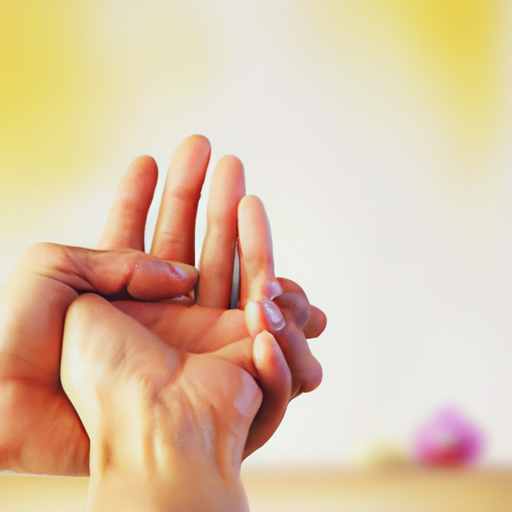
Have you ever wondered about the different levels of Reiki healing? Maybe you’ve heard about Reiki and its benefits, but you’re not quite sure what the different levels entail. Well, you’re in the right place! In this article, we’ll dive into the world of Reiki healing and explore the different levels, from beginner to advanced. Whether you’re new to Reiki or already familiar with it, there’s always more to learn and discover.
So, let’s get started! Reiki healing is a holistic practice that originated in Japan, focusing on the transfer of energy to promote physical, emotional, and spiritual healing. It involves the gentle laying of hands on or near the body, allowing the practitioner to channel energy and facilitate healing. The first level of Reiki, often referred to as Reiki 1, is the initiation stage where you learn the basics and become attuned to the Reiki energy. This level primarily focuses on self-healing and practicing Reiki on others. As you progress to the second level, Reiki 2, you gain access to additional healing techniques and symbols, allowing you to deepen your practice and perform distance healing. In the advanced levels, such as Reiki Master and Reiki Master Teacher, you further enhance your abilities and become qualified to teach and attune others to Reiki. So, by exploring the different levels of Reiki healing, you’ll not only gain a better understanding of this ancient practice but also discover how it can transform your life and those around you. To learn more about each level of Reiki healing, continue reading the article! Reiki is a powerful form of energy healing that brings balance and harmony to the mind, body, and spirit. It originated in Japan and has since been practiced and embraced by people all over the world. Reiki healers, known as practitioners, undergo various levels of training and attunements to enhance their understanding and practice of this healing modality. In this article, we will explore the different levels of Reiki healing and their significance in one’s Reiki journey.
Level 1: Reiki Practitioner
At the first level of Reiki, known as the Reiki Practitioner level, individuals become acquainted with the basics of Reiki. They learn about the principles and philosophy of Reiki, gaining an understanding of how this universal life force energy works to promote healing and well-being. This level also includes learning the hand positions for self-healing, allowing practitioners to channel Reiki energy to themselves to improve their own physical and emotional wellness.
Additionally, Level 1 Reiki Practitioners are taught the hand positions for healing others. This enables them to offer Reiki treatment to friends, family, or clients to help alleviate physical pain, reduce stress, and promote overall balance and relaxation. This level also includes receiving the first attunement, a process in which a Reiki Master connects the practitioner to the Reiki energy, enhancing their ability to access and channel it.
Level 2: Reiki Practitioner
Building upon the knowledge and skills gained in Level 1, Level 2 of Reiki takes practitioners deeper into their Reiki journey. This level focuses on deepening the understanding of Reiki principles and delving into the use of powerful Reiki symbols. These symbols hold specific energies and can be used to enhance healing and manifestation.
In Level 2, practitioners learn how to send distance healing using Reiki symbols. This allows them to transmit healing energy to individuals who are not physically present, transcending time and space. Distance healing is a beneficial tool for practitioners, as it allows them to extend their healing abilities beyond physical limitations.
Practitioners also receive the second attunement in Level 2, which further amplifies their connection to the Reiki energy and strengthens their intuitive and psychic abilities. This level empowers practitioners to expand their healing practice and offer more advanced techniques to their clients.

Level 3: Reiki Master
Level 3, often referred to as the Reiki Master level, marks a significant milestone in one’s Reiki journey. At this stage, practitioners become even more immersed in the wisdom and knowledge of Reiki. They acquire a deeper understanding of Reiki’s spiritual aspects and learn the master symbol, which holds immense power and significance.
Reiki Masters receive the master attunement, which further heightens their ability to channel and utilize the Reiki energy. This attunement also opens them up to spiritual guidance, allowing them to connect with their higher selves and the divine in a more profound way.
One of the key aspects of Level 3 is the ability to teach and attune others. Reiki Masters gain the skills and knowledge necessary to pass on the gift of Reiki to others, providing them with the tools and attunements to become Reiki practitioners themselves. This level marks the beginning of their journey as teachers and mentors in the Reiki community.
Level 4: Reiki Master Teacher
Level 4, also known as the Reiki Master Teacher level, takes practitioners to the pinnacle of their Reiki mastery. This level is reserved for those who are dedicated to deepening their understanding and practice of Reiki, as well as guiding and mentoring future Reiki practitioners.
In Level 4, practitioners delve into advanced healing techniques that further expand their mastery of Reiki. They learn how to work with subtle energy systems, perform deeper energetic clearings, and utilize additional symbols and techniques to address specific ailments or imbalances.
Receiving the master teacher attunement in Level 4 empowers practitioners with the ability to effectively teach Reiki to others. They acquire the skills and knowledge necessary to structure and lead Reiki classes, ensuring that future practitioners receive comprehensive and meaningful training. Becoming a Reiki Master Teacher is a significant responsibility, as it involves shaping and nurturing the next generation of Reiki practitioners.

Level 5: Reiki Grand Master
Level 5, the highest level of Reiki mastery, is known as the Reiki Grand Master level. This level goes beyond the physical and energy healing aspects of Reiki and focuses on attaining complete spiritual enlightenment and transcendence.
In Level 5, practitioners reach a state of deep spiritual awareness, expanding their consciousness and connecting with the universal energy on a profound level. They attain a state of oneness with the divine and become lineage bearers of Reiki, carrying the ancient teachings and wisdom forward.
As Reiki Grand Masters, practitioners are called to share their Reiki wisdom with the world. They become ambassadors of this healing modality, spreading love, light, and healing energy wherever they go. This level represents the culmination of the Reiki journey and the highest level of mastery one can achieve.
Benefits of Receiving Reiki Attunements
Receiving Reiki attunements at each level of the Reiki journey holds numerous benefits for practitioners. These attunements facilitate the opening up of individuals to a higher vibrational frequency, bringing them in alignment with the universal life force energy. This allows for the clearing of energetic blockages and the promotion of physical, emotional, and spiritual healing.
The practice of Reiki also enhances overall well-being and balance. Regular Reiki sessions or self-healing routines can reduce stress, anxiety, and physical pain, promoting a sense of calm and relaxation. Reiki also accelerates spiritual growth and self-awareness, allowing practitioners to tap into their intuitive and psychic abilities and gain insights into their life purpose and spiritual path.
Choosing the Right Reiki Teacher
Selecting the right Reiki teacher is crucial to one’s Reiki journey. When seeking a teacher, it is important to look for reputable and experienced individuals who have a deep understanding and practice of Reiki. Personal compatibility and connection with the teacher are also important factors to consider, as the relationship between practitioner and teacher plays a significant role in the learning process.
Verifying certification and credentials is another essential step when choosing a Reiki teacher. Ensuring that the teacher has received proper training and is recognized by a reputable Reiki organization provides reassurance and confidence in their abilities.
Evaluating teaching style and methods is also important, as different teachers may have varying approaches to teaching Reiki. Some may focus more on the spiritual aspects, while others may emphasize the practical application of Reiki. It is important to find a teacher whose style resonates with you and aligns with your goals and intentions for learning Reiki.
Lastly, listening to recommendations and testimonials from others who have studied with the teacher can provide valuable insights into their teaching abilities and the impact they have had on their students’ Reiki journeys.
Reiki Healing Techniques
Reiki offers a range of healing techniques that can be applied in various situations and circumstances. Traditional hand-on healing is one of the fundamental techniques of Reiki, where the practitioner applies gentle touch to different areas of the body to channel the healing energy.
Distance healing is another powerful technique in Reiki, where practitioners use symbols and intention to transmit healing energy to individuals who are not physically present. This technique allows for healing across vast distances and has proven to be effective in promoting healing and well-being.
Chakra balancing and energy clearing are also common techniques in Reiki. Practitioners work with the body’s energy centers, known as chakras, to remove blockages and restore energetic flow. This helps to harmonize the body and promote overall balance and well-being.
Auric field cleansing and restoration are techniques that involve working with the energy field that surrounds the body. By clearing and restoring the auric field, practitioners can remove stagnant or negative energy, promoting a sense of vitality and positivity.
Meditation and visualization are integral aspects of Reiki healing. Practitioners use these techniques to connect with the Reiki energy, visualize healing energy flowing through themselves or others, and promote a deep sense of relaxation and well-being.
Integrating Reiki into Daily Life
Reiki is not limited to formal healing sessions or treatments. It can be integrated into daily life and become a way of living. By adopting certain practices and routines, individuals can harness the power of Reiki for self-care, emotional well-being, enhancing relationships, and even professional development.
Self-care practices and self-healing routines involve dedicating time and attention to one’s own well-being. This may include daily Reiki self-treatments, meditation, journaling, or engaging in activities that promote relaxation and self-reflection.
Using Reiki for emotional and mental well-being involves applying Reiki techniques to address emotional imbalances, reduce stress, and promote mental clarity. Reiki can help individuals release negative emotions and cultivate a positive mindset.
Applying Reiki to enhance relationships involves sending healing energy to individuals or situations, promoting understanding, compassion, and harmony in relationships. Reiki can also be used to heal past wounds and cultivate forgiveness and love.
Utilizing Reiki in career and professional development involves using Reiki techniques to enhance productivity, focus, and creativity in the workplace. Reiki can also assist in manifesting professional goals and attracting opportunities for growth and advancement.
Infusing Reiki in daily activities and intentions allows individuals to bring the healing energy of Reiki into all aspects of their lives. This can involve incorporating Reiki symbols or intentions in daily rituals or setting positive intentions for the day.
Conclusion
Reiki offers a powerful and transformative healing modality that has the potential to positively impact one’s physical, emotional, and spiritual aspects. By embarking on the journey of Reiki, practitioners can deepen their understanding and practice of this healing art, ultimately achieving higher levels of mastery.
The different levels of Reiki provide a structured path for individuals to expand their knowledge, skills, and connection with the Reiki energy. Receiving attunements at each level enhances one’s ability to channel and utilize Reiki, fostering healing and well-being.
Choosing the right Reiki teacher is essential to a practitioner’s Reiki journey. It is important to seek reputable and experienced teachers who align with your personal values and goals. Verifying certification and credentials, evaluating teaching style and methods, and listening to recommendations can help in making an informed decision.
Reiki offers a variety of healing techniques that can be applied in different situations, from traditional hand-on healing to distance healing, chakra balancing, and meditation. These techniques allow practitioners to address a wide range of physical, emotional, and spiritual imbalances.
Integrating Reiki into daily life brings continuous balance and healing. By incorporating Reiki into self-care practices, emotional well-being, relationships, career development, and daily activities, practitioners can enhance their overall sense of well-being and live a more harmonious and balanced life.
Embarking on the journey of Reiki is not only a personal endeavor but also a commitment to the well-being and healing of others. As practitioners progress through the different levels of Reiki, they not only deepen their own practice but also gain the ability to guide and mentor future Reiki practitioners, spreading the wisdom and healing power of Reiki to the world.









